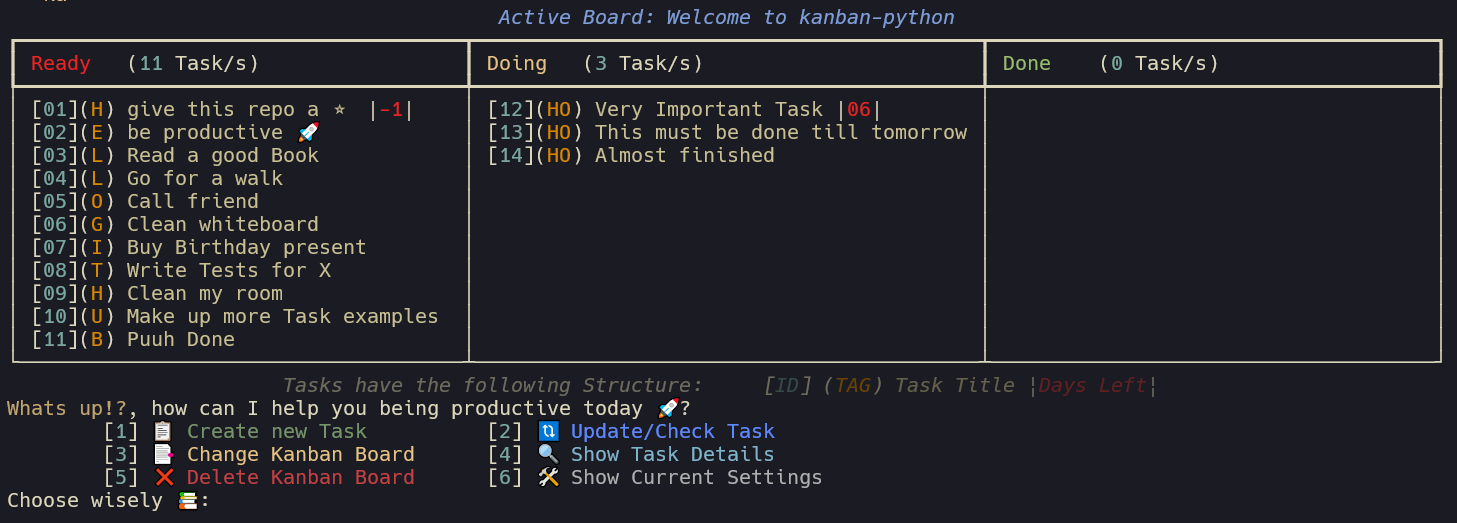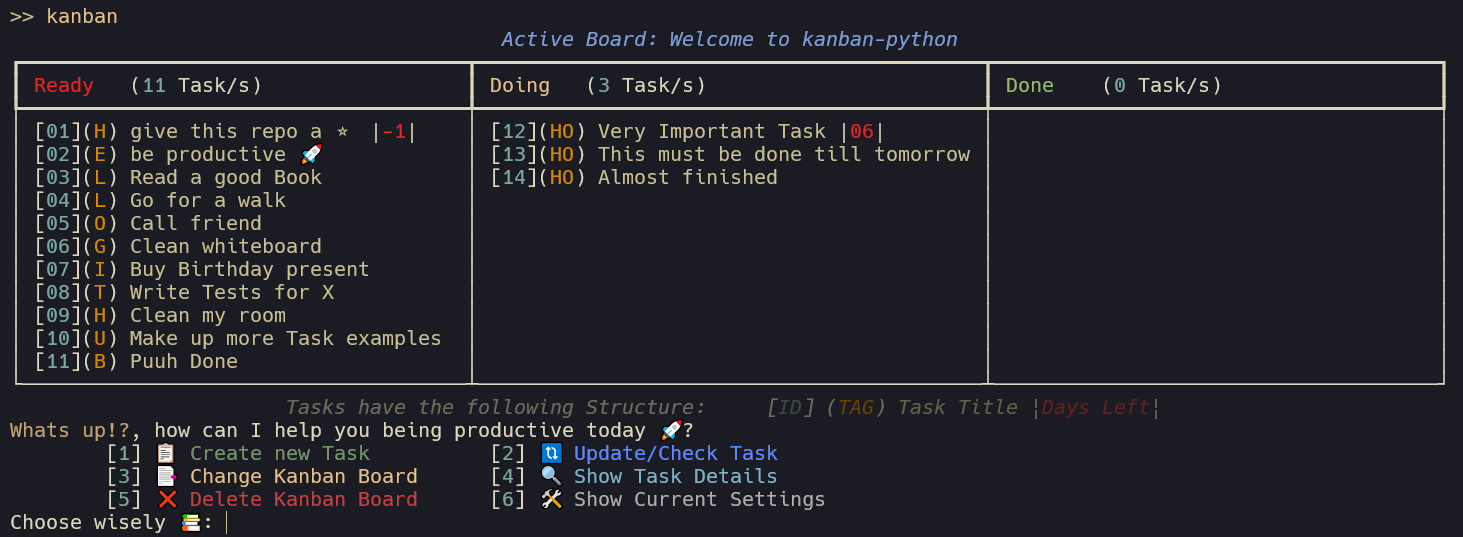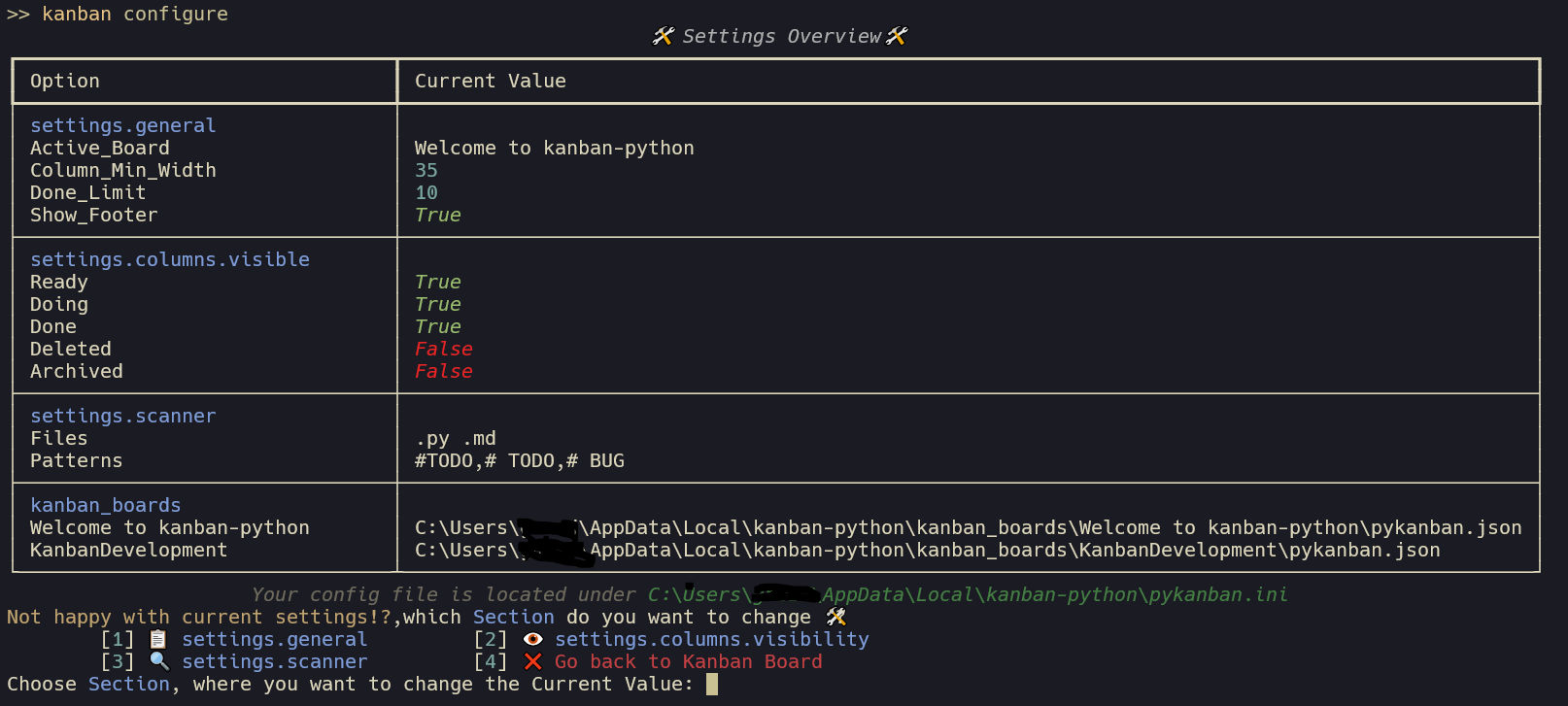Terminal Kanban App written in Python
Project description
kanban-python
A Terminal Kanban Application written in Python to boost your productivity :rocket:
Introduction
Welcome to kanban-python, your Terminal Kanban Board Manager.

kanban-python also comes with more features and customization options. This package was developed with pyscaffold, which provides nice project templates and takes over much of the boilerplate for python packaging. Which was a great help for developing my first package.
Features
-
colorful and interactive: kanban-python uses rich under the hood to process user input and display nice looking tables to the terminal.
-
configfile: A
pykanban.inifile gets created on first initialization in a.kanban-pythonfolder in yourHome-Directory. This can be edited manually or within the kanban-python application. It tracks the location for all your created boards.
-
storage-file for each board: Each created board comes with its own name and
pykanban.jsonfile, which stores all tasks for that board. -
column customization: kanban-python comes with 5 pre-defined colored columns: [Ready, Doing, Done, Archived, Deleted] More column can be added manually in the
pykanban.ini, also the visibility can be configured. -
time-tracking: for each task it is tracked, how long it was in the Doing column, based on the moments when you update the task status. The initial Task structure on creation looks as follows:
Installation
You can install kanban-python with:
python -m pip install kanban-python
Usage
There are 3 commands available after installation of kanban-python:
Create new Boards
kanban init
Is used to create a new kanban board i.e. it asks for a name and then creates a pykanban.json file with a Welcome Task.
On first use of any command, the pykanban.ini configfile and the .kanban-python folder will be created automatically.
Interact with Tasks/Boards
kanban
This is your main command to interact with your boards and tasks. It also gives the option to show the current settings and adjust them.
Adjusting the settings can also be done directly by using the 3rd command which is:
Use Ctrl-C to exit the application at any time. :warning: If you exit in the middle of creating/updating a task,
or changing settings, your progress wont be saved.
Change Settings
kanban configure
To create a new custom Columns, you have to edit the pykanban.ini manually and add a new columnname + visibility status
under the settings.columns.visible section.
Feedback and Issues
Feel free to reach out and share your feedback, or open an Issue, if something doesnt work as expected.
Note
This project has been set up using PyScaffold 4.5. For details and usage information on PyScaffold see https://pyscaffold.org/.
Project details
Release history Release notifications | RSS feed
Download files
Download the file for your platform. If you're not sure which to choose, learn more about installing packages.
Source Distribution
Built Distribution
Hashes for kanban_python-0.1.3-py3-none-any.whl
| Algorithm | Hash digest | |
|---|---|---|
| SHA256 | f4ee04e1d795cdd62953e145b47e1ae56ba78938cba733a3354fede1e83f710e |
|
| MD5 | 6466efee3d07c29668fa55898c3b114e |
|
| BLAKE2b-256 | 8e4b795db1de880b740b0be652394029632a806c48a8bf21db558d0dcd9c4075 |



















